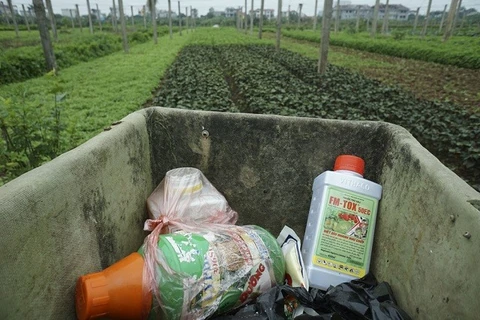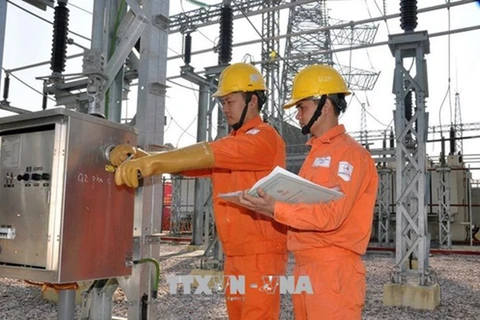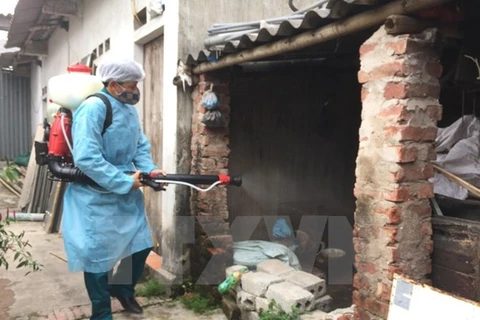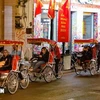
An embankment made of rock is built along a section of the Hong (Red) River, running along Dan Phuong district in Hanoi (Photo: VNA)
Hanoi (VNA) - The Hanoi People’s Committee has predicted ten risks that could result in disasters including those related to fire, pollution, transport, health and nuclear power plants.
A project on the management and mitigation of risks facing the city has been approved by local authorities so that they can prepare responsive plans.
Among the risks determined in the project is radioactive dust from three nuclear power plants located in the south of China threatens to pollute the air and water sources in the city.
The above mentioned plants include a 1,000-megawatt plant in Guangxi, a 600-megawatt plant in Guangdong and a 650-megawatt unit of the plant located in Hainan. All were put into operation in 2016.
The plants are located close to the northern border of Vietnam. The one in Guangxi is 50km from Mong Cai city in Quang Ninh province, and less than 500km from Hanoi.
“Hanoi will be one of northern localities affected the most severely if any of the three plants were to leak radiation,” according to the project.
In the event that a disaster occurs, the municipal Department of Science and Technology, alongside relevant agencies, has been assigned to consult with local authorities on scientific and technological solutions in order to prevent or mitigate radioactive leaks and nuclear incidents.
Another disaster-inducing scenario is the breach of the Hong (Red) River dyke. If the water level in the river was to exceed the third warning level (11.5m), it would threaten millions of people and cause huge property damage.
The project also noted the risk of fires, explosions and the potential collapse of 1,600 outdated apartment buildings in the city.
A scenario of traffic accidents caused by elevated trains was also forecast. If a train carrying 500 passengers was to fall onto the street below, then it would cause massive casualties among passengers and people on the street.
Among other risks assessed are stampedes at crowded events, cyber attacks, epidemics, widespread power outages, and water pollution.
To effectively respond to the predicted risks, the city’s authorities aim to improve the capacity of disaster response, as well as search and rescue agencies, while strengthening the accuracy of warning systems.
Relevant agencies have been required to draft detailed plans to prevent and respond to disaster-including risks.
The city will continue to invest in environmental monitoring systems, particularly with regard to air and water pollution.
Hanoi used to experience frequent natural disasters. A flood in 1971 with water rising up to 14.3m in Red River Delta broke three dykes, killing 100,000 people and affected more than 2.7 million.
The rains in 2008 flooded the inner city for five consecutive days, causing human losses and property damage worth more than 3 trillion VND (130.5 million USD).
A tragic train accident in 1982 killed more than 300 people in Trang Bom district in the southern province of Dong Nai. A fire at the ITC building in HCM City in 2002 injured over 100 people.
It is essential that such disasters are averted in the future to prevent the tragic loss of human life and ensure that the country develops in a sustainable way.-VNA
VNA
























